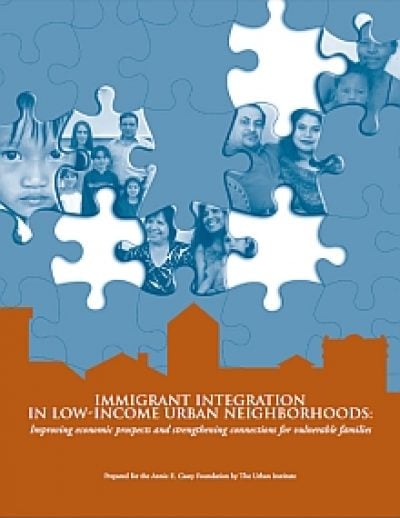Poorer with Kids
The survey found that poor families with kids living in the Making Connections neighborhoods faced higher rates of poverty and hunger than those without kids, regardless of whether they were born in the United States or not.

This report concludes that immigrant groups can close economic gaps between them and native-born populations with reliable, trustable access to education, transportation, English language acquisition and citizenship. It is part of a series produced by the Urban Institute based on neighborhood-level surveys of residents living in the Foundation’s Making Connections initiative sites
Studies show that human capital--usually measured by formal schooling--has a great influence on wages, job quality and other measures of economic advancement.
In 2002-04, foreign-born survey respondents in the Making Connections neighborhoods from Mexico and Central America were less likely to have a high school education compared to U.S.-born white, black, Asian and Hispanic respondents.
We hope you'll find value in this report. We’d love to get a little information from you, which we'll use to notify you about relevant new resources.